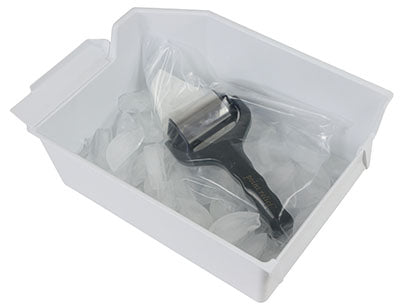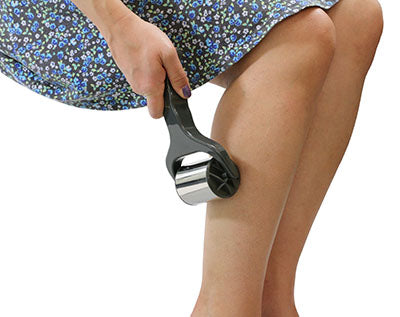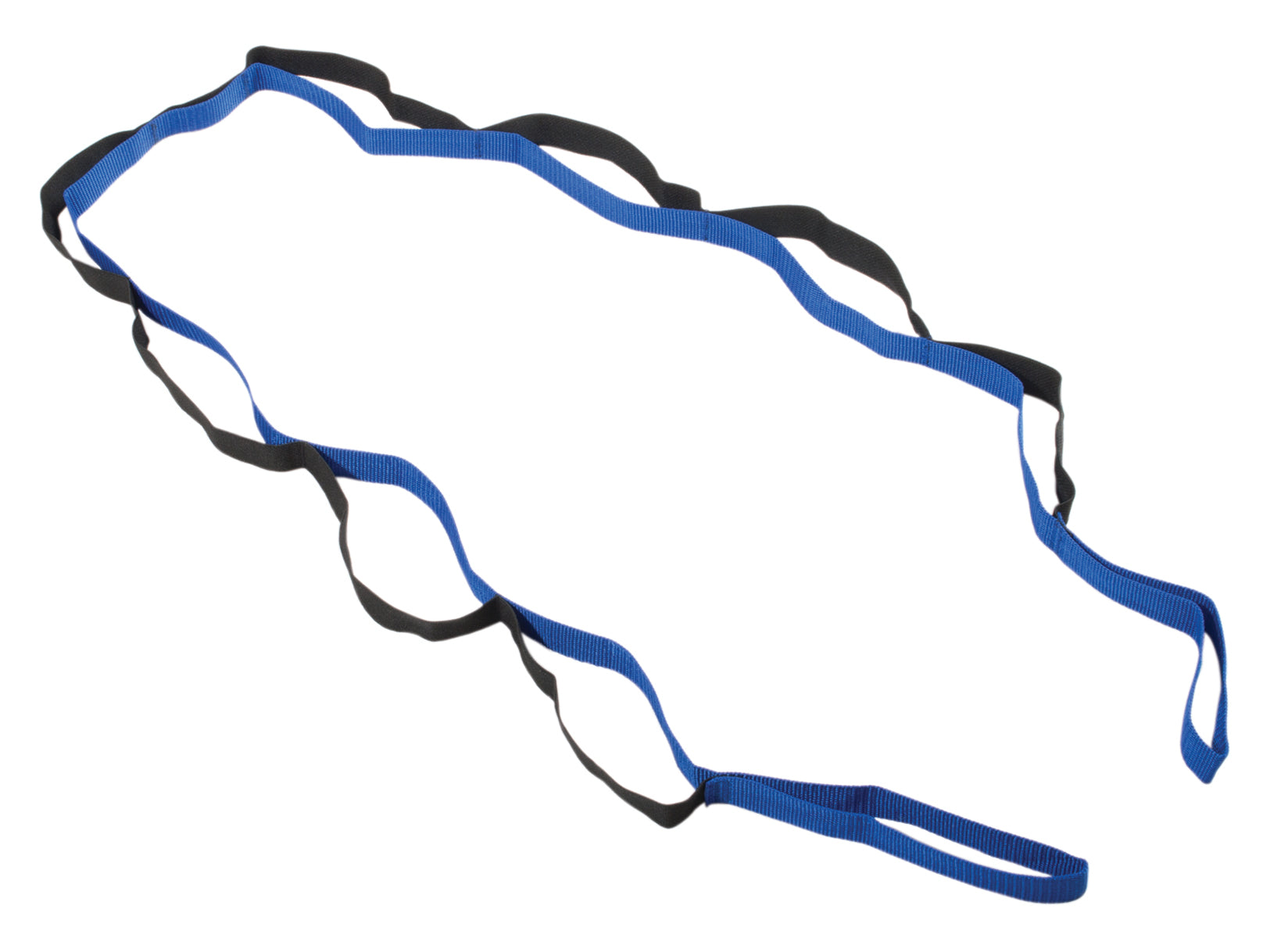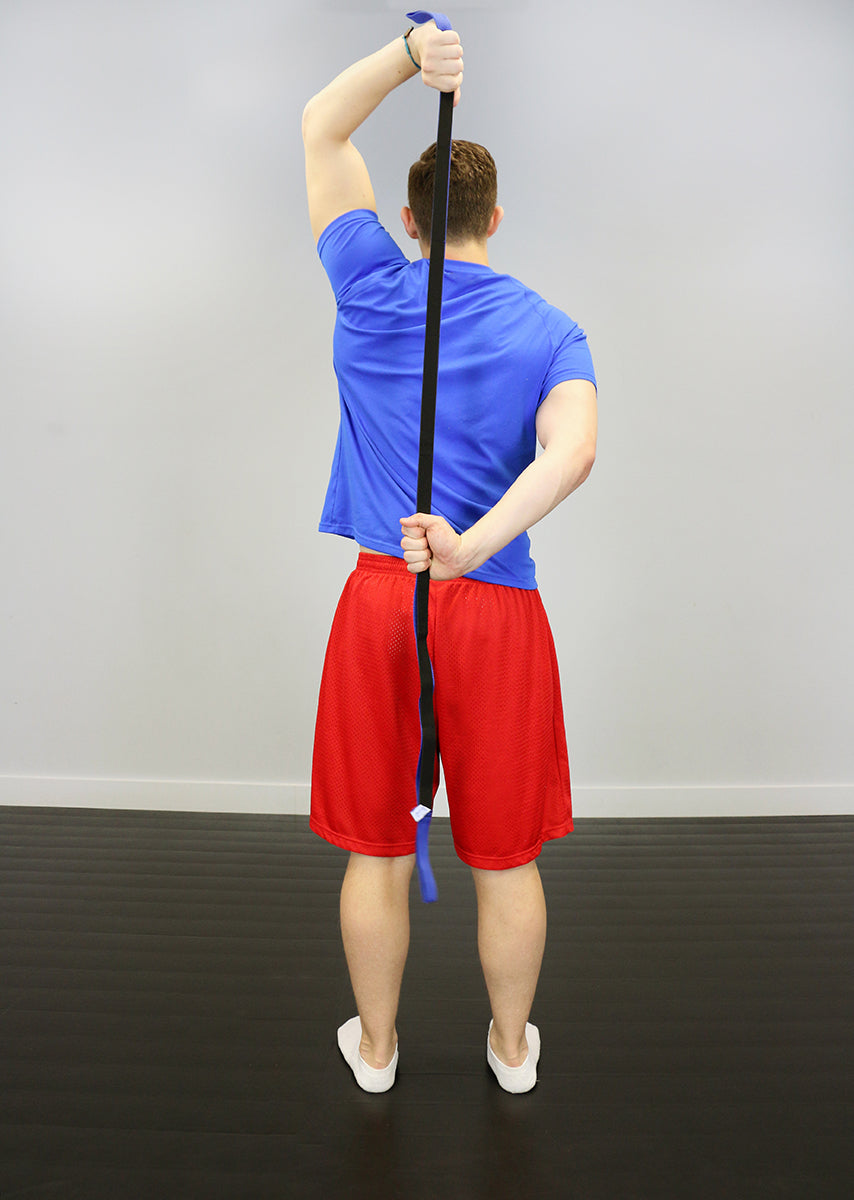Remove the Extensor Block for a Faster Sprint
Your strength capacity is obviously a key factor in determining how fast you can run. However, a recent study brought to my attention by Bret Contreras shows that it isn't just the amount of force put into the ground that matters but the direction of force vectors as well. So where the forces go into the ground has a more prominent influence on speed than how much force is put into the ground.It only makes sense that a more horizontal force vector during a sprint will generate faster propulsion. That's why we lean forward during the acceleration phase. This also explains the logic behind the fact that running technique will influence your sprinting ability.
As coaches and trainers, we have a pretty big focus on different strength qualities for the improvement of our athletes. Absolute strength, explosive strength, speed strength, and strength speed are examples of what we want to build in “correct” proportions. While this is good and creates a much needed foundation, we can miss the big picture and many probably do.
The problem
When you accelerate and/or reach top speed, you have to be able to create forceful movement through extension. We all know hip extension is important, but is it really enough to have good isolated hip extension? You know about “triple extension,” which basically refers to the extension of the hips, knees and ankles and is a big thing when it comes to movement. So just to put things in perspective...Strength is a key factor in determining how much and how fast you can generate force. Strength is your engine.
Technique will determine how much strength you can successfully use in athletic movements like speed. Technique is then equivalent to the size of your engine.
Movement directly affects technique. Movement is the tuning of your engine.
The analogy is mine and you can probably figure out a better one, but the important message is that movement—or should I say “lack of movement”—will affect your technique and how much strength you can generate in the right direction.
Because studies and experience from brilliant speed coaches show that the direction of forces is more important than the amount of strength put into the ground, it makes sense that if we can both transfer forces in the right direction and put maximum strength in that same direction, speed will improve. The big problem, as I like to call it, is the “extensor block.” We will shortly get into what that is. Hopefully you know that glute bridge/hip thrust variations are way too good to not be included in your training. If nothing else, I hope you at least have them as part of your warm up. That being said, I first started doing glute bridges after some stuff Eric Cressey put out in articles and DVDs some years back. They just felt good right away. Something happened and it made a positive change in both posture and performance.
I continued doing a thorough warm-up regime regularly, but as we all probably know, there have been times when you just don’t have time to do everything you know you're supposed to be doing. After a lack of stretching and activation work combined with heavy strength training, suddenly something felt wrong when doing hip thrusts. It just seemed like it was impossible to get a good glute contraction.
OK, so we all know that stretching the psoas/hip flexor is a good thing for fixing the “reciprocal inhibition” of the glutes, and I did a lot of it. Still the hips seemed to crush into something and stop at the end of the thrusting movement where full hip extension should appear but didn’t.
Something interesting with the Thomas test
Let's take a look at the Thomas test. You know—the test where you primarily can get some information regarding the muscle length of the hip flexors, especially the psoas and rectus femoris.Here's a picture of a good Thomas test where muscle length of both the psoas and rectus femoris is good.
Here's a picture of a Thomas test showing tightness of the rectus femoris. For individuals with a lot of muscle, this could just be muscle stiffness and not really a problem, but often I think it is. And a big one!
Considering the problem I mentioned with hip thrusting and lack of glute activation, do you see the correlation?
The normal Thomas test is pretty much the top of the hip thrust movement, right? But the Thomas test with tightness in rectus femoris obviously isn't! What would happen if the person in the picture with rectus tightness placed the foot closer to the body like in the hip thrust position? Well, the knee would raise because of the muscle being a hip flexor and a knee extensor.
In other words, tightness of the rectus femoris will work as an “extensor block” in the hip thrust. No wonder many people struggle with glute activation and only feel the hamstrings and erectors work like crazy when doing hip thrusts with that big of a movement deficit made by “the block.”
Removal of “the extensor block”
The solution to this problem should be pretty obvious, right? Just stretch the psoas and rectus femoris and you're good to go. That will often work, but it depends on how you do it. There is also other stuff you should consider for maximum effect of “extensor block” removal.Even though stretching will release the muscles, in my experience, it can still feel like there is a blocking of hip extension. Tha's why we need to roll. Lately, there has been some discussions regarding what good
foam rolling actually does, but I don’t care as long as it makes things feel better. In this case, it makes hip extension feel much better, so rolling is a given.
Rolling can be boring, but in this case, you really don’t have to roll that much to get the desired effect. Start with hard rolling of the quads/rectus femoris and also the TFL. This is an area where many people feel the “block.” It really helps to roll the hell out of this area just in front and a little lateral to the anterior pelvis. For better effect, you can hump on a lacrosse ball on the floor or press it into a wall. Either way, make sure to get it done.
Consider the rolling to be done and move on to stretching. Static stretching of the psoas and rectus femoris is pretty common, but I have found regular static stretching to be less than optimal. Pavel Tsatsuoline's “forced relaxation technique” does the trick. It's a version of PNF stretching where you hold a stretch, contract the muscle hard, and keep the tension until you feel it release, which can take about a minute give or take.
Start with the psoas stretch.
When doing the contraction, focus on driving the knee down into the ground. This will help with the activation of the psoas—the muscle you want “fatigued.” Start with a ten-second hold and then release and push the hips forward. Let the hips sink into a greater stretch while you contract the glutes. Repeat.
Then stretch the rectus femoris.
You can either hold the back foot like illustrated or place it on the edge of a bench, which is more relaxing. Either way, start to press the foot backward similar to a leg extension movement and hold it for ten seconds. Relax and sink further into the stretch. Repeat.
But don’t forget...
I bet you've done a standing hip flexor stretch in a lunge position, pushed the hips forward, and then either felt the back knee bend or the heel raise from the floor. While this might seem natural, it's basically a compensation from the ankles.
If you don’t have enough movement in the ankles, whether it's a problem with mobility of the joint or flexibility of the relating muscles, the extension block increases. This is where the holistic approach comes into play once again and we need to work with the calves. When your limiting ability for dorsiflexion gets some work and you increase range of motion, you decrease the extensor block. While you might say that “dorsiflexion” is the opposite of what happens when you have triple extension, you have to think about what happens before that as well. You can`t wait to tighten up when the barbell touches your chest in a bench press and expect great results. The same thing applies to athletic movement and sprinting.
Stretch the calves like this:
Make sure to keep the body straight and flex the quadriceps and glutes. In other words, keep the leg as straight as possible. If you have a hard time flexing the quads in this position, you know the block is present. Either contract harder or decrease the angle of the plate set up.
Then what?
When the “extensor block” is removed, get going with the hip thrust and see how it feels. It should feel much better, and the glutes will now hopefully do most of the work. While you might argue with this, I think the single leg hip thrust is the best way to work the glutes when used in conjunction with accommodated resistance like chains and bands. You will hit the glutes like never before and you will have sore glutes for several days!While the chains in this case are used to add weight and don’t really accommodate the resistance, the
bands definitely do. The “nice” thing with the bands is that you now actually put on an artificial extensor block, so you really have to work hard with the glutes to get into hip extension. If you have trouble, it will often help to increase the problem to make the neural system respond to a higher degree.
Take home message
Your ability to move in the right places at the right time determines your ability to demonstrate optimal technique, which again determines the ability to use your strength in the right directions.Just like the most effective bar path in powerlifting is a vertical line, there are optimal directions for movement in sports. The “extensor block,” as described in the article, prevents your ability for optimal technique force development and direction. Make sure to work on the right areas and crush the extensor block. Your athletic abilities depend on it!
References
- Contreras Bret. Accessed at: #.
- Morin (2011) Technical Ability of Force Application as a Determinant Factor of Sprint Performance.











































































